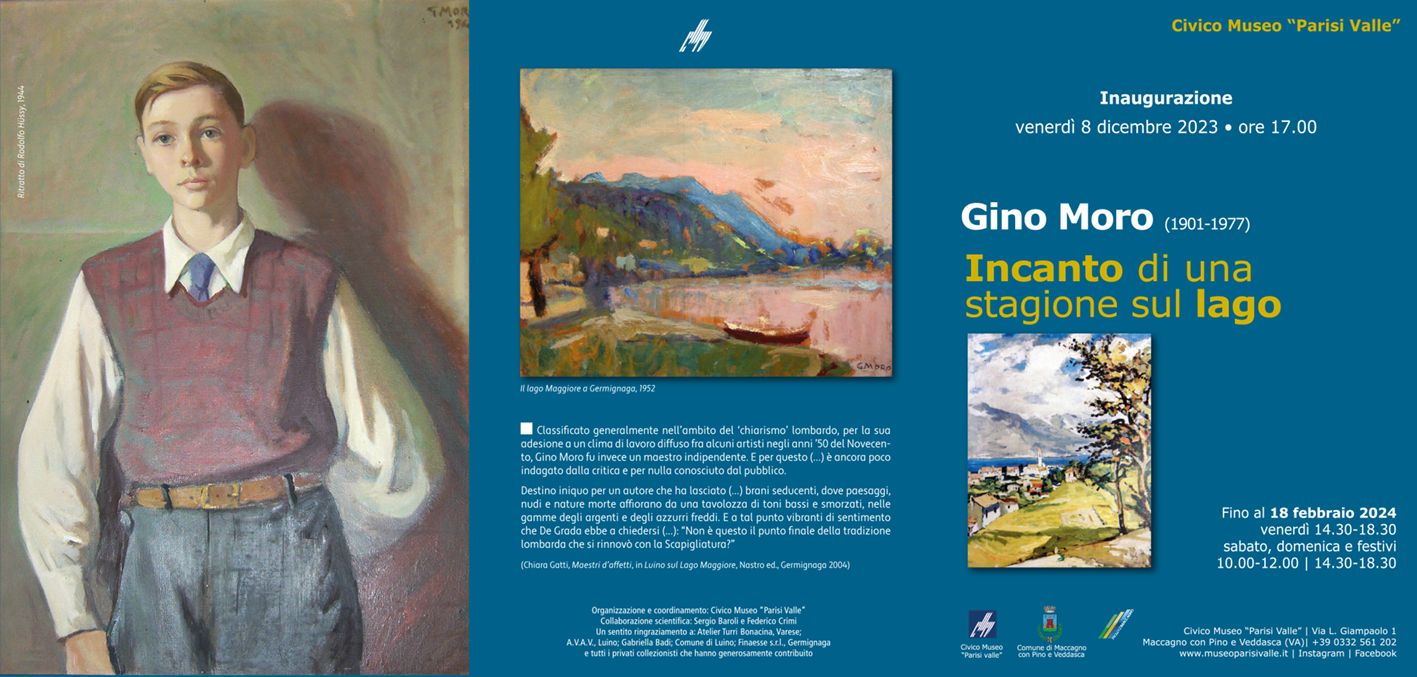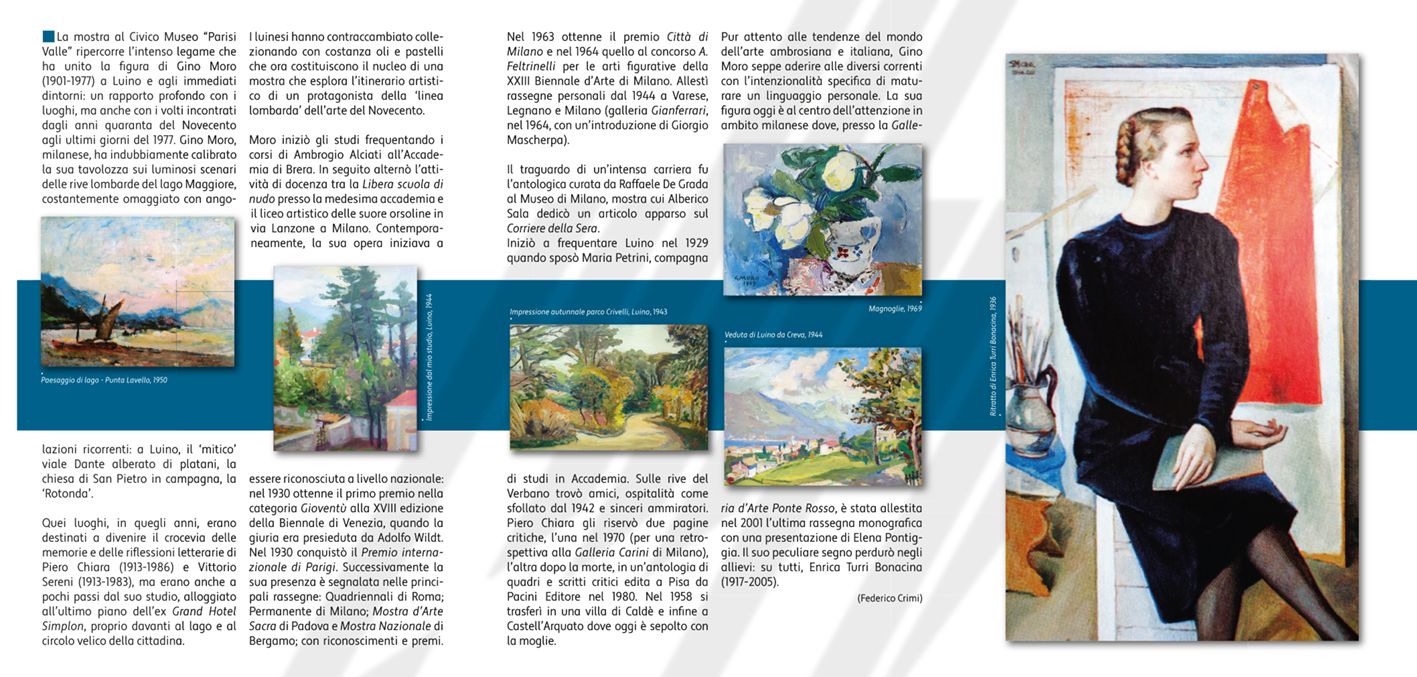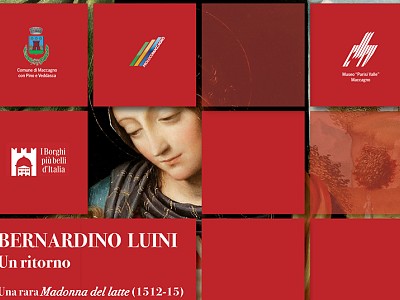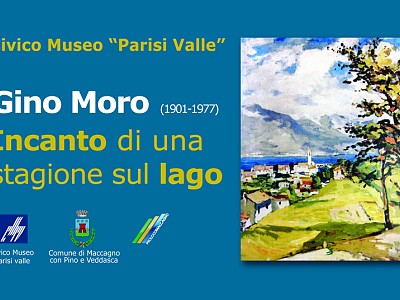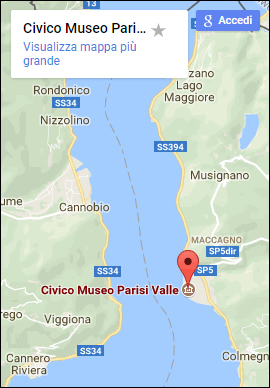Gino Moro (1901 / 1977). The Magic of a Season on the Lake
Scientific collaboration: Sergio Baroli and Federico Crimi
The exhibition at the Civico Museo 'Parisi Valle' traces the intense bond that united the personality of Gino Moro (1901-1977) with Luino and its surrounding countryside: a deep relation not only with places, but also with the faces he encountered continuously from the 1940s to the last days of 1977. Gino Moro, a Milanese, undoubtedly adjusted his palette to the luminous landscape of the Lombard shores of Lake Maggiore, which he constantly depicted to from recurring perspectives: in Luino, the 'mythical' Viale Dante lined with plane trees, the church of San Pietro in Campagna, the 'Rotonda'. These places, in those years, became the centre of the memories and literary reflections of Piero Chiara (1913-1986) and Vittorio Sereni (1913-1983), but they were also just a few steps away from Moro’s studio in Luino, located on the top floor of the former Grand Hotel Simplon, right in front of the lake and the town’s sailing club. The people of Luino appreciated the painter and consistently collected his oil paintings and pastels, which now are the heart of an exhibition tracing the artistic career of a protagonist of the 'Lombard line' of 20th century art.
Gino Moro started his studies attending Ambrogio Alciati's courses at the Brera Academy. He later held lessons alternately at the Free School of the Nude, an evening course at the Brera, and at the artistic secondary school conducted by Ursoline nuns in Via Lanzone in Milan. During these years, his work began to be recognised in Italy: in 1930 he won the first prize in the category Young artists of the 18th Venice Biennale; chairman of the jury was Adolfo Wildt. In 1930 he won the International Prize of Paris. In the following years, he was represented in all major Italian exhibitions: Quadriennali in Rome; Permanente in Milan; Mostra d'Arte Sacra in Padua and Mostra Nazionale in Bergamo and received awards and prizes. In 1950, the jury of the society of art and history Cesare da Sesto awarded him an ad honorem prize with special mention. In 1963 he received the City of Milan Prize and in 1964 he won the A. Feltrinelli competition for the figurative arts at the XXIII National Art Biennale in Milan. From 1944 onwards, he held personal exhibitions in Varese, Legnano and Milan (Gianferrari Gallery, in 1964, with an introduction by Giorgio Mascherpa).
The culmination of such an intense career was the retrospective dedicated to him by Raffaele De Grada at the Milan Museum, an exhibition reviewed by Alberico Sala in the Corriere della Sera.
He startet to visit Luino in 1929, when he married Maria Petrini, a fellow student he had known at the Academy,. On the banks of Lake Maggiore he found friends, hospitality as an evacuee of 1942 and sincere admirers among the important families (Pedroni, Hussy and Ratti). Piero Chiara dedicated two critical essays to him: the first one in 1970 on occasion of his retrospective at the Carini Gallery in Milan, the other after his death, in an anthology of works and critical writings on the painter published in 1980 in Pisa by Pacini Editore. In 1958, he moved to a villa in Caldè and finally to Castell'Arquato, where he and his wife are buried.
Although he was aware of the changing trends in the Milanese art scene, Moro adhered to the various currents with the specific intention of developing his own artistic language. Today, his figure is still at the centre of attention in the Milanese art world where, at the Ponte Rosso Art Gallery, the latest monographic exhibition was held in 2011: Gino Moro, with a presentation by Elena Pontiggia. His particular signature persisted in his students: above all, in the work of Enrica Turri Bonacina (1917-2005).
(FEDERICO CRIMI).
‘Generally classified within the current of Lombard 'chiarismo', due to his adherence to a work atmosphere he shared with some artists in the 1950s, Gino Moro was instead an independent master. This is why (...) he is still scarcely studied by critics and hardly known to the public. An unjust fate for an artist who has left (...) captivating pieces, where landscapes, nudes and still lifes emerge from a palette of low, dampened tones, in nuances of silver and cold blue. And so vibrating with emotion that De Grada asked himself (...): ‘Isn't this the final point of the Lombard tradition that was revived by the Scapigliatura?’’
(Chiara GATTI, Maestri d’affetti, in Luino sul Lago Maggiore, Nastro ed., Germignaga 2004).¬¬
Acknowledgements: Atelier Turri-Bonacina, Varese; A.V.A.V., Luino; Gabriella Badi; Comune di Luino; Finaesse s.r.l., Germignaga
And all the private collectors who have generously contributed
Per informazioni: + 39 0332 561202
Civico Museo “Parisi Valle”
Via Leopoldo Gianpaolo 1
21061 Maccagno con Pino e Veddasca (Va).
Inauguration 8 December at 5pm
Poster (click to enlarge)
Flyer (click to enlarge)
Pictures of the exhibition (click to enlarge)
https://www.museoparisivalle.it/en/the-exhibits/gino-moro-1901-1977-the-magic-of-a-season-on-the-lake#sigProIdc0efe2e657






